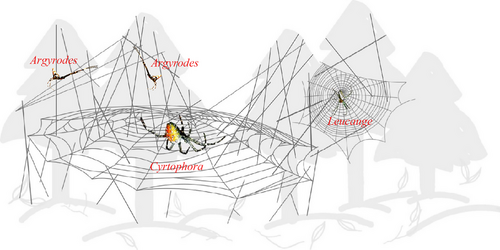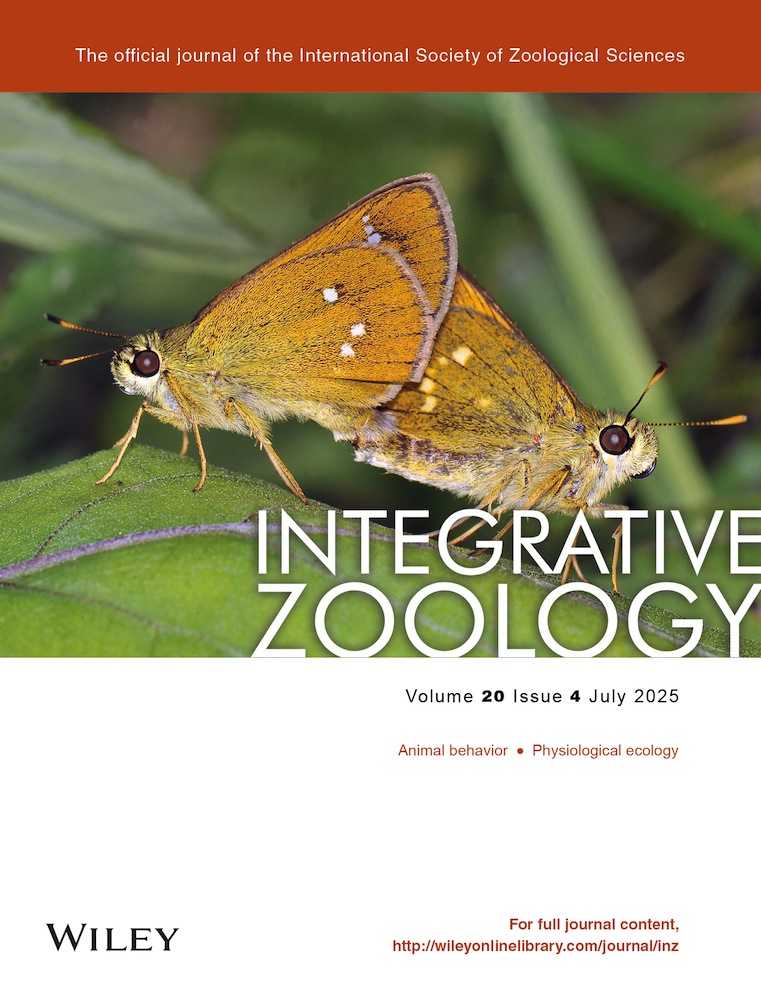Synergistic Effects of Three-Species Symbiosis in Spiders
Funding: This work was supported by a grant from the National Natural Science Foundation of China (32370530).
Graphical Abstract
Symbiosis refers to an intimate relationship between different species, mainly including parasitism, commensalism, and mutualism (De Bary 1879). These relationships are established through prolonged contact and interaction between the species involved (Saffo 1992). Symbiotic partners communicate through signals that facilitate partner recognition and the regulation of mutual benefits and costs in shared activities (Goodale et al. 2010). Within these relationships, one species can derive advantages from another, such as access to optimal habitats, nutritional resources, or protection from predators (Pierce and Dankowicz 2022). Moreover, the synergistic effects of these interactions may lead to coevolution and reveal phylogenetic correlations between the species (Klimov, OConnor, and Knowles 2007).
However, symbiotic relationships often involve more than two species, with a third-party species changing the nature of relationships between symbionts (Wootton 1994). Third parties may take advantage of mutually supportive interactions (Kiers et al. 2010) and alter the balance of costs and benefits within the relationship (Thompson and Cunningham 2002). For example, the larvae of the lycaenid butterfly Jalmenus evagoras and their attendant ants Iridomyrmex mayri engage in a symbiotic relationship mediated by secretions and chemical signals, which may be exploited by spiders and parasitoid wasps to enhance their success in foraging and oviposition (Elgar, Nash, and Pierce 2016). Despite this, limited research has explored predator symbiosis involving more than two species (Chamberlain, Bronstein, and Rudgers 2014), particularly the mediating role of third parties in symbiotic relationships and multi-species symbiotic associations composed entirely of predators.
The life habits of web-building spiders have led to sustained, intimate interactions with other species, shaping their ecological roles through competition, predation, parasitism, or mutualism (Elgar 1993). For example, the large sheet and tangle webs of the tropical spider Psechrus argentatus provide structural support to its guest, Philoponella undulata. When P. undulata was removed, the growth rate of P. argentatus decreased, suggesting a mutualistic relationship between the two spider species (Elgar 1994). This kind of mutualistic relationship was confirmed experimentally between Cyrtophora unicolor and the kleptoparasitic Argyrodes fissifrons, where the silver body of A. fissifrons attracts prey to C. unicolor’s web, and in return, C. unicolor allows A. fissifrons access to its web to share the entangled prey (Peng et al. 2013). Despite these findings, few experimental studies have explored symbioses involving three spider species. Recently, Peng et al. (2024) documented a three-species symbiosis between Cyrtophora hosts and their two guests, the orb-weaving Leucauge and kleptoparasitic Argyrodes (Figure 1). The three-dimensional web complex of Cyrtophora spiders provides a habitat patch for Argyrodes and Leucauge spiders.

To increase the generality of their findings, the authors selected three field sites with varying habitats, climate zones, and symbiont species compositions: Brisbane (BNE) in the subtropical zone of Australia, Cairns (CNS) in the tropical zone of Australia, and Amami-Ōshima Island (ASJ) in the subtropical zone of Japan. Their experiments investigated the impact of different combinations of guests on the Cyrtophora host web by manipulating the presence of Argyrodes and Leucauge guest species. They measured prey interception rates and host weight change as indicators of the interaction's effects. The results revealed that Cyrtophora hosts intercepted more prey and gained more weight when web-building Leucauge guests were present. In contrast, Argyrodes guests imposed a fitness cost on the Cyrtophora host but only in the absence of Leucauge guests.
The results show that the symbiotic relationship among the three species is remarkably consistent in different living environments and the composition of symbiotic species using the method of multi-site field experiments so the conclusions of this article are more convincing. Previous research on multispecies symbiosis has mainly focused on the effects of third parties on the symbiosis of the other two species (Elgar 1993; New 2017). However, this study illustrates the connection relationship between a three-species symbiosis and highlights the importance of exploring synergistic effects of different symbionts within arthropod symbioses, particularly among predators like spiders. This study enhances our understanding of symbioses and may also provide insights into the dynamics of multi-species symbiotic associations in other systems.
Acknowledgments
This work was supported by a grant from the National Natural Science Foundation of China (32370530).





